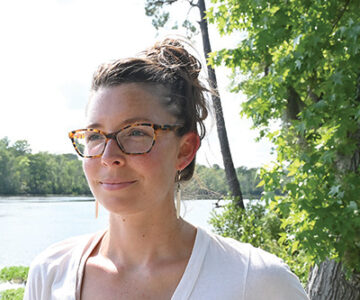Environment
Council urged to back tougher tree rules

Conservation groups pushed back last week against efforts to scale back protections and penalties in a proposed amendment to Georgetown County’s tree regulations.
The amendment that was recommended for approval by the Planning Commission in June was deferred for final approval by county staff this week for additional review. Last month, Council Member Raymond Newton said residents in his rural district objected to regulations that are being promoted by newcomers, adding that their stewardship of the land went back generations.
One of those residents told the council this week she supports increased protections and thinks more should be done.
“I live on the land where my ancestors began farming in the 1700s,” Erin Donmoyer said. She manages the timber on that property, which is in Newton’s district. She is also the Riverkeeper for the Black and Sampit rivers.
Occupied residential property outside the Waccamaw Neck is exempt from the tree protections. The amendment would change that for the Waccamaw Neck, but not for the rural areas. Only seven species of trees are protected in rural areas, and those apply only when the trunk diameter reaches 12 inches.
“The circumstances in which a protected tree would be protected is rather slim,” Donmoyer said.
On the Waccamaw Neck, all but a few species are protected starting at 10 inches of trunk diameter.
Cecelia Dailey, a botanist who works on the Black River, listed 27 species by their Latin names that have ecological significance and, in some cases, are rare. She urged the council to use scientific names in the regulations to avoid confusion.
“Large tree species that define our area are missing from the tree list,” Dailey said.
The amendment, which the county can enforce under the pending-ordinance doctrine, increases the fine for damaging or cutting a protected tree without a permit to $500 per inch of trunk diameter. The current fine is $500 per tree. Violations would also result in the county withholding development permits for the property for two years.
Newton has said those penalties could be a hardship for low-income residents.
Monica Whalen, a staff attorney for the S.C. Environmental Law Project, pointed out that the current and proposed rules wouldn’t affect them if they live in the rural areas.
“The fine only pertains to those who choose to circumvent the permit process and engage in the illegal removal of trees” for development, she said.
Rather than scale back the penalties, she suggested the county could create a provision for people who can demonstrate a hardship.
Duane Draper, who chairs the citizens group Keep It Green, said the county attorney was correct when he said the current rules lack teeth and the fine is just the cost of doing business.
“We can’t continue kicking a good ordinance down the road because of one-off situations,” he said.
Draper also dismissed Newton’s claim that the rules reflect different cultures within the county.
“The tree ordinance is not an us versus them issue. If anything, it’s an us versus trees issue. It shouldn’t be divisive,” Draper said. “Lots of us have generational respect for our natural resources.”
Donmoyer urged the county to consult botanists to determine which species need protections. While the county appears to have plenty of trees, she said, “the remaining forest is largely a monoculture of a single species grown for timber: loblolly pine.”




